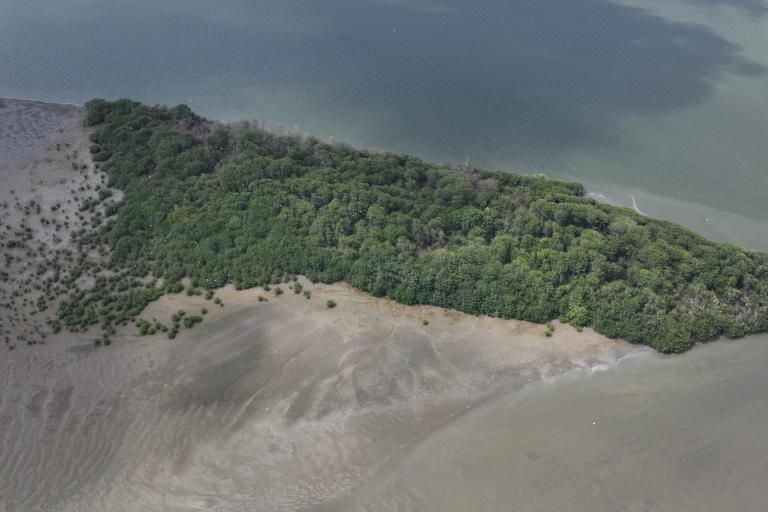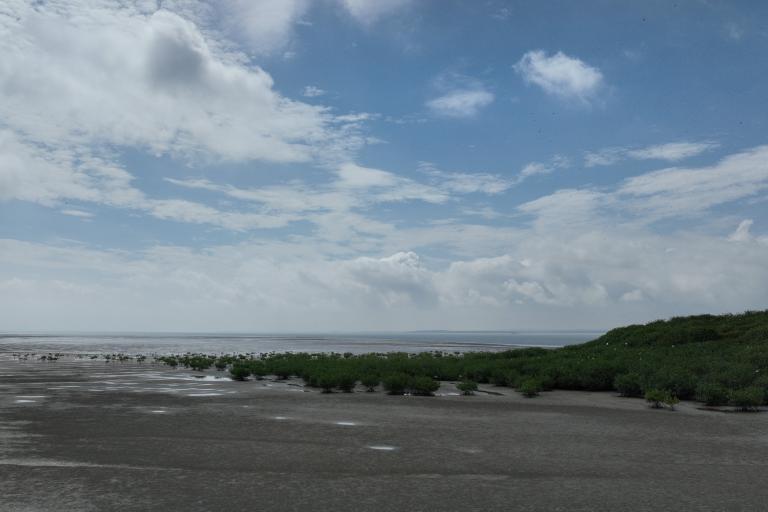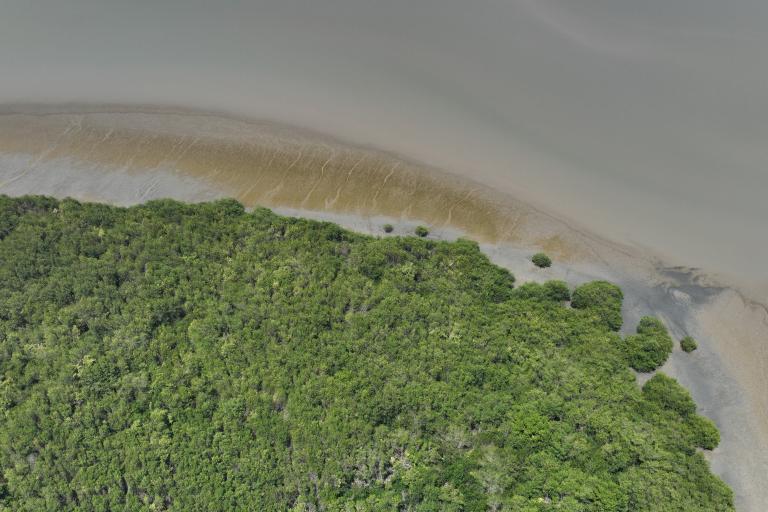Jan De Nul Group is coordinating the AquaForest project together with our partners South Pole, Mantis Consulting, Haedes, University ESPOL, University of Antwerp, Vrije Universiteit Brussel, and the NGO Fundación Calisur. The project is supported by the Government of Flanders (Departement Omgeving) through the G-STIC Climate Action Programme 2022, and the International Union for Conservation of Nature (IUCN).
Exceptional ecosystems with a lot of advantages
Mangroves are among the most productive ecosystems and provide a long list of important services. They protect coastal communities from flooding, erosion and extreme water events, and they have a strong ability to capture and store carbon. Their ‘carbon sequestration rate’ is even higher than that of tropical forests on land. In addition, mangroves are ecosystems with high biodiversity rates that only exist in tropical regions. At the same time, they perform water purification and contribute to the subsistence of local forest-dependent communities and their livelihoods.
The loss of mangrove habitats in the region not only means all benefits of these important ecosystems are lost, it also intensifies coastal safety problems, as the land around the Guayas river delta is more exposed to floods and erosion without the mangrove coverage.
Restoring mangrove ecosystems
To restore the mangrove ecosystems around the Guayas river delta, we initiated the AquaForest project in January 2023. The goal? To reclaim an island and create a mangrove habitat on it, by reusing the material we dredged for the access channel of Guayaquil, in a circular and sustainable way. We will develop the new mangrove habitat on an existing intertidal flat in the Guayas river delta, 15 kilometres northeast of Posorja. This is within an area where modelling results have shown that sediments start to be deposited naturally.
Based on the development of ‘green-grey infrastructure’
To realise the AquaForest project, we will develop so-called ‘green-grey infrastructure’. This means that, in the first instance, we will combine conventional engineering techniques for land reclamation with the circular reuse of dredged material in order to create a mangrove forest through assisted afforestation. At the same time, we will focus on establishing the initial conditions that are ideal for the development of mangrove habitats. In doing so, we will mainly focus on the sediment characteristics and hydraulic conditions that are ideal for the growth of mangrove propagules, proliferate new accompanying tree seeds and enhance the colonisation process of associated biodiversity, both micro and macro fauna.
An unprecedented project in the region
Even though mangrove restoration is widely applied worldwide, AquaForest is an unprecedented project in the region thanks to the innovative reuse of dredged sediments to create a new habitat. As such, AquaForest will become a Nature-based-Solutions (NbS) ‘Living Lab’ where important mangrove ecosystem services will be demonstrated and studied. Think of protection against floods, gain in biodiversity and socio-economic benefits with a special focus on local communities. The AquaForest Living Lab will demonstrate the technical and economic feasibility of similar Nature-based-Solutions.
In addition, international collaboration and co-creation between key stakeholders will be the basis of the project. Private companies, public institutions such as state and local governments and municipalities, international organisations, local communities and citizens, NGO’s, universities and researchers will all be collaborating to deliver AquaForest.
Contact: aquaforest@jandenul.com
Acknowledgements
The AquaForest project is financially supported by:
The Government of Flanders through the G-STIC Climate Action Programme 2022. The Government of Flanders launched the G-STIC Climate Action Programme to support developing countries in the fight against climate change. By providing financial support to projects for climate change adaptation and mitigation, the G-STIC Climate Action Programme aims to strengthen developing countries' implementation of climate policies, strategies, regulations and action plans.
The IUCN (International Union for Conservation of Nature) through the ‘Blue Natural Capital Financing Facility’ (BNCFF) call. BNCFF is designed to support financing opportunities for Nature-based Solutions in and around coastal and marine environments and to strengthen specific projects that combine likely bankability and positive environmental and social impacts.












